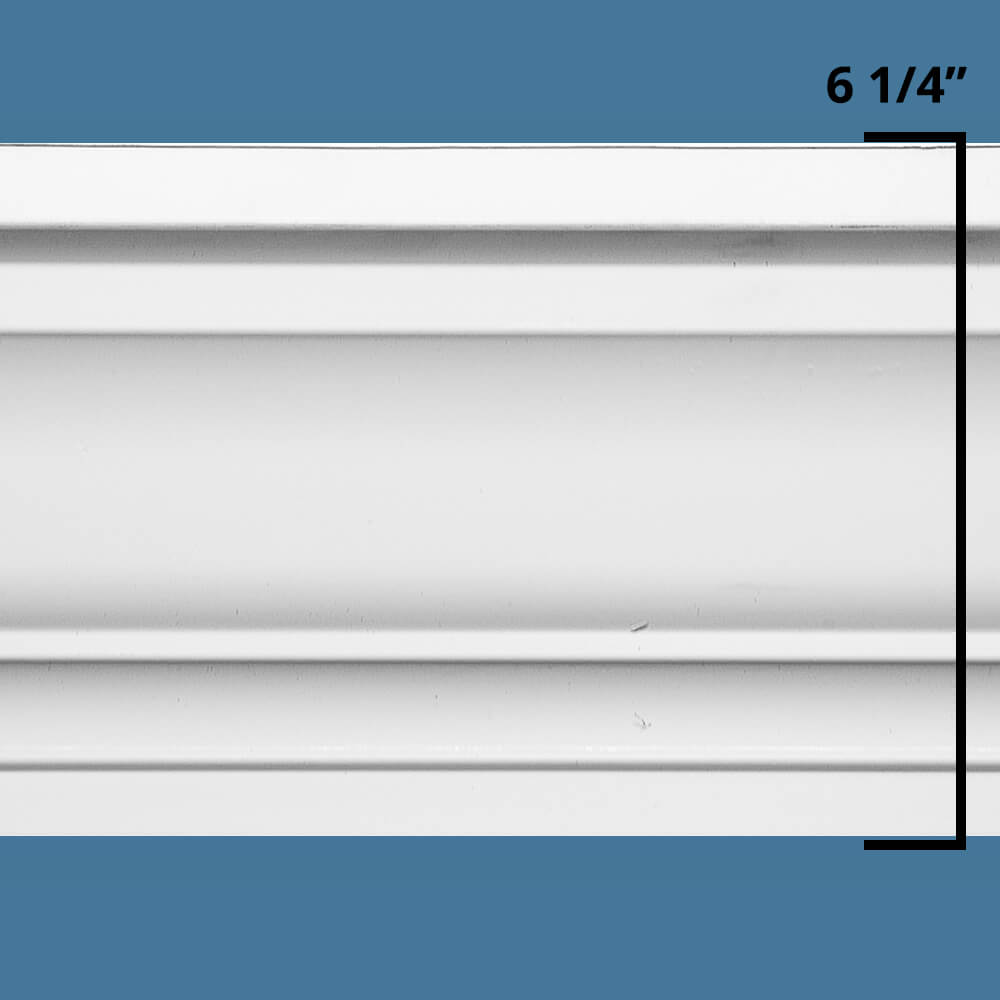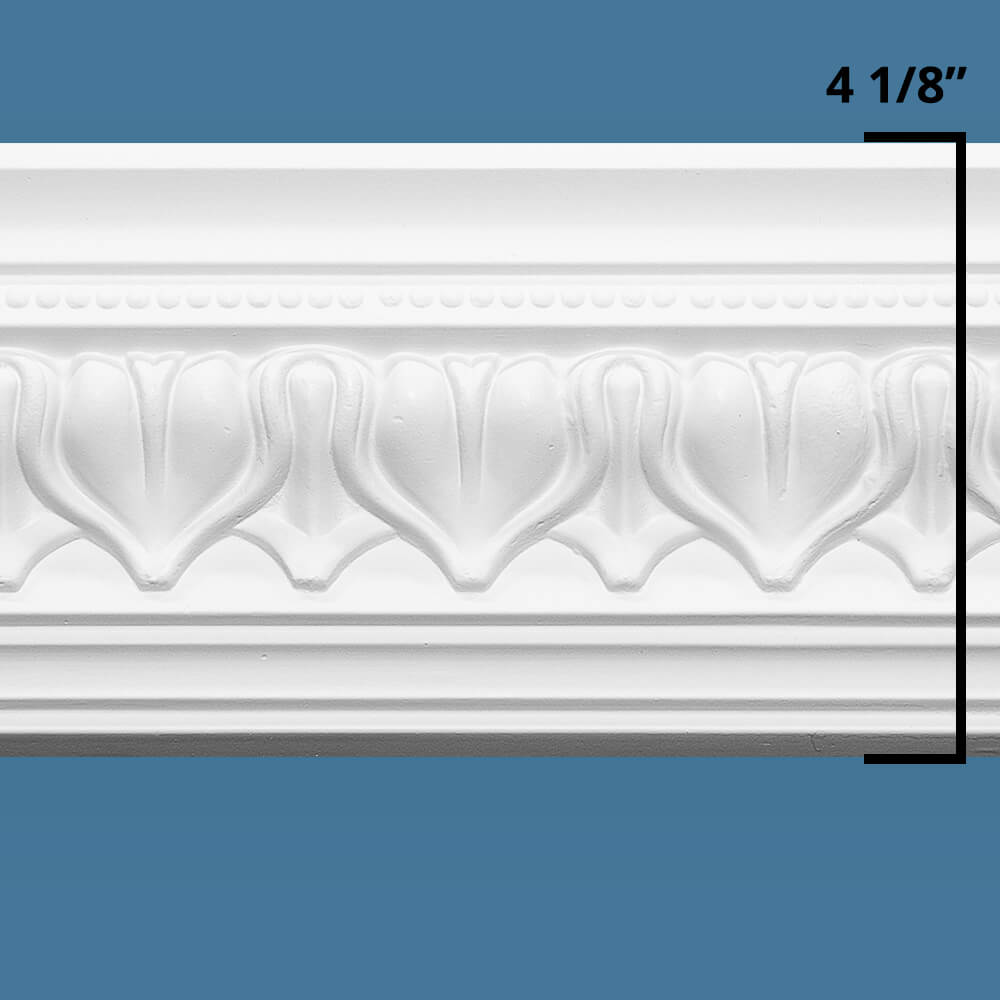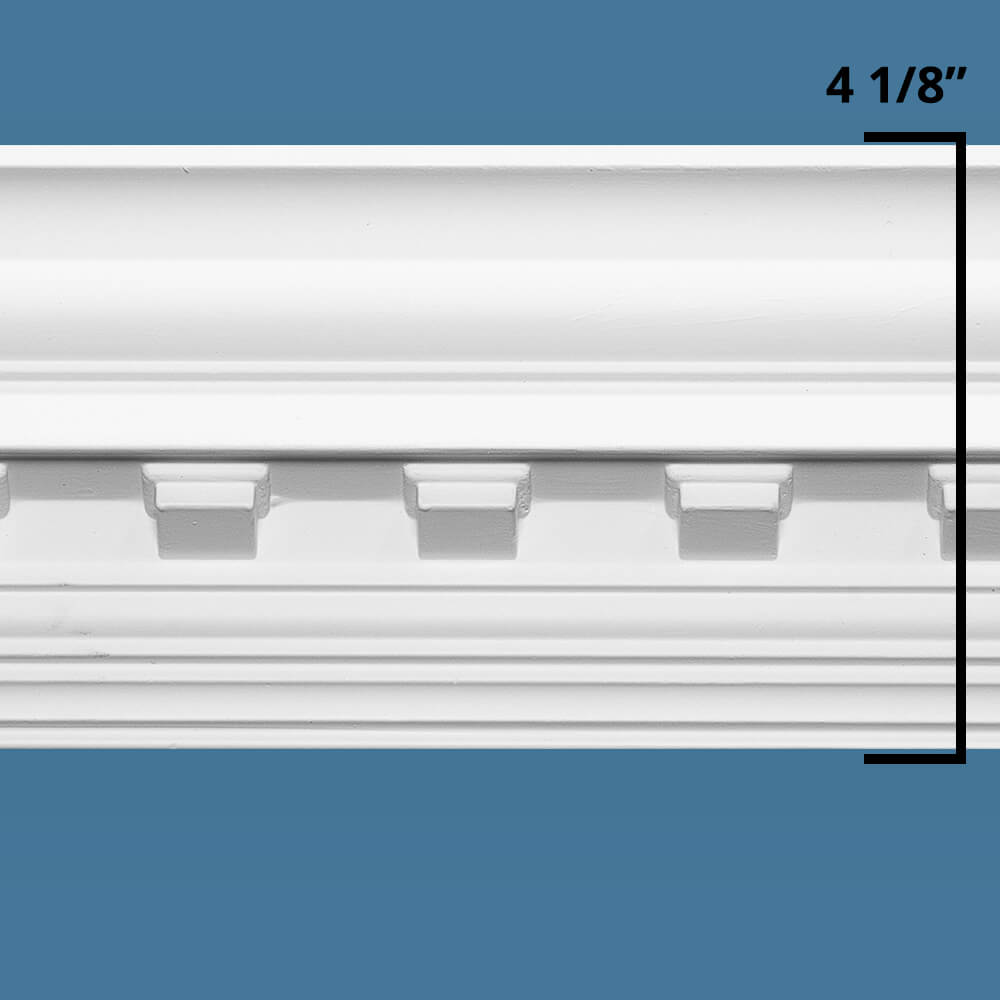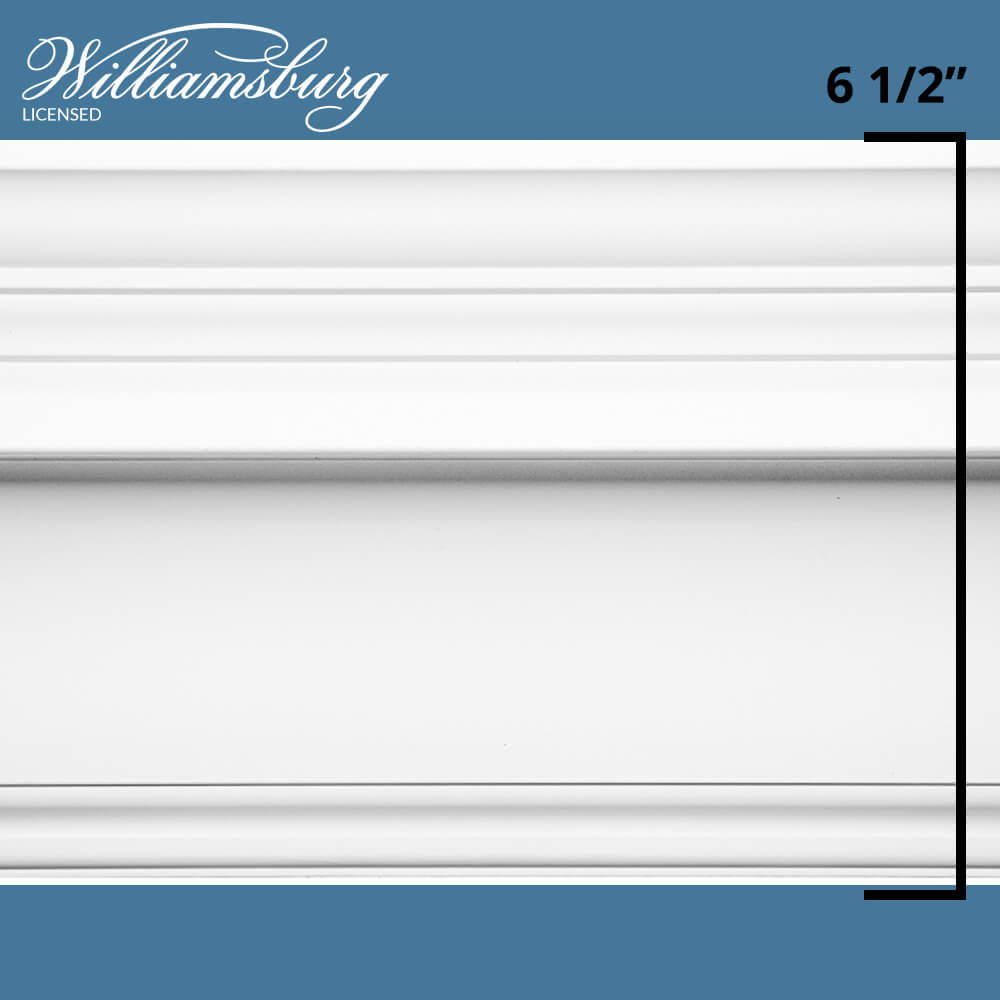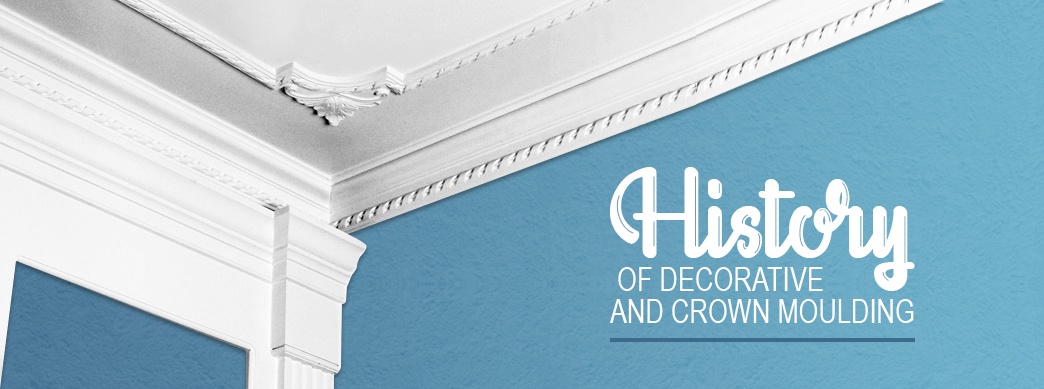
As one of the most beautiful embellishments in any home, crown moldings have a rich history that dates back generations. The concept has evolved throughout the ages, and the options available have grown exponentially. Modern homes commonly feature decorative molding today, and yet this architectural detail still brings the beauty of the past to the present. Whether you live in a home from centuries ago or are building a brand new home, crown molding can elevate your home's interior.
If you're interested in molding's roots and how it has changed to embody sophistication and elegance, this article is for you. We're going to define this architectural term and then look at the history of molding, including its ancient beginnings and its more recent developments. We'll also look at what types of molding are popular today. We'll even address the common question of spelling. Read on to learn more about decorative and crown molding and how it's a beautiful piece of history that lives on.
Crown Molding explained
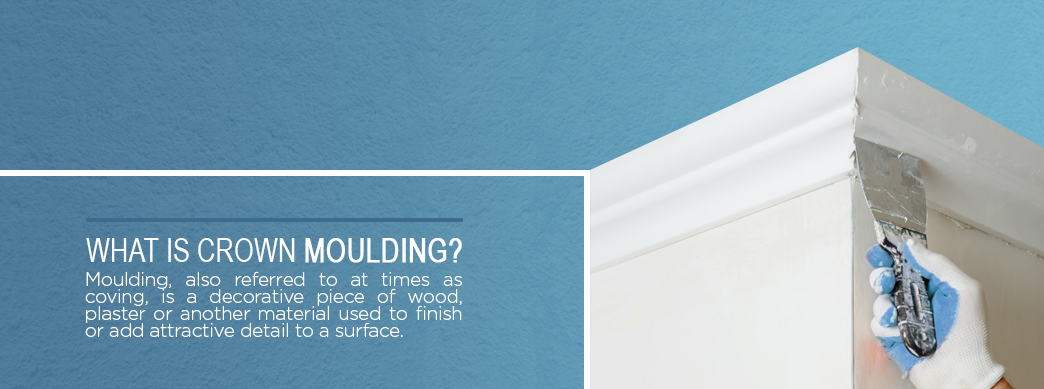
Molding, also referred to at times as coving, is a decorative piece of wood, plaster or another material used to finish or add attractive detail to a surface. Some moldings go around door frames, windows and other features in a building. Crown molding is a particular type of decorative molding commonly used to finish the transition where the top of the wall meets the ceiling. Sometimes this term is used to refer to decorative molding in general.
Crown molding has stood the test of time and is still extremely popular today. This moulded strip comes in various designs that feature different shapes and patterns. The profile of crown molding is often akin to an S-shape.
No matter what style or design crown molding features, for the centuries that it has existed, it's always been a symbol of opulence and an attention to architectural detail. This is true of other types of decorative molding, as well.
Many homes in the U.S. today feature crown molding, some of them with ornate carvings and others a narrow white strip with a simple profile. Crown molding is most at home in older houses or homes with a more formal feel, but there's really no house where crown molding looks out of place, as long as you choose the right style. You may not know what your home is missing until you add crown molding. Suddenly, every room can look more polished and inviting than it did before.
The History of Molding
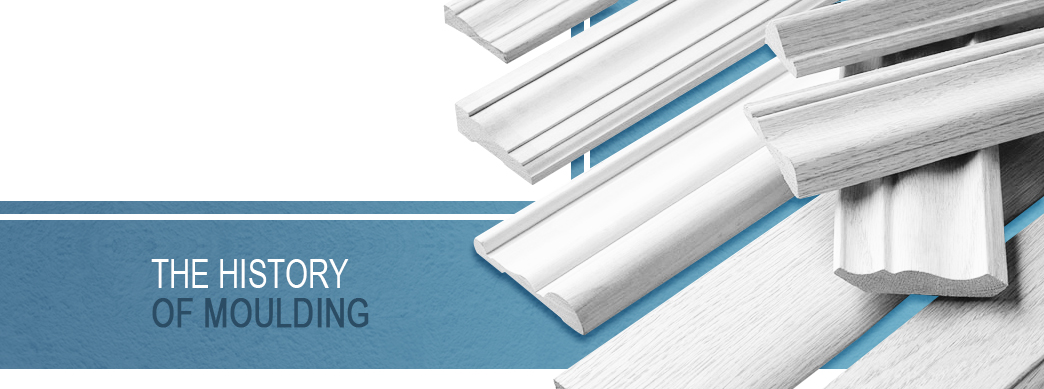
So, why and where did molding originate, and how did it remain the beautiful architectural detail we know and love today? Whether you're an avid DIYer, an interior designer, a house flipper or an average homeowner, understanding the history of molding can help you better appreciate the molding you have in your home or help you decide whether crown molding is the finishing detail your home is missing.
Before we dive into the details, it's helpful to understand that, throughout history, molding has had both a functional and a decorative purpose. In a functional sense, crown molding covers any cracks that could form between the wall and ceiling. This was especially common in older homes. The decorative purpose of crown molding is the enduring reason for its popularity. Even from the very start, molding was meant to be decorative. Civilizations through the ages have valued aesthetics as a means of expressing creativity and skill, celebrating beauty or even simply showing off.
The Ancient Beginnings of Decorative Molding
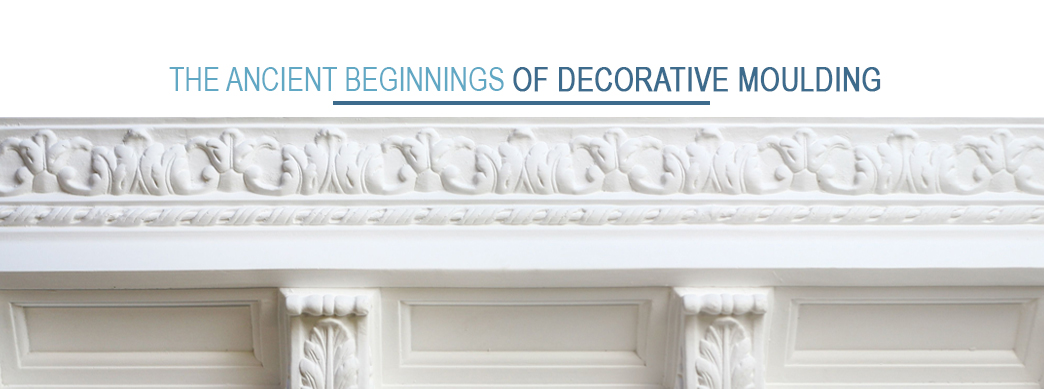
The origins of decorative molding date back to ancient times. The Egyptians carved molding from stone to create ornate details for columns or the exterior of buildings. There were two types of molding in particular that Egyptian architecture featured — the cavetto and the torus. Cavetto molding is elaborate, deep molding that crowned the tops of temples or other grand buildings. Torus molding is a semicircular projecting molding that mainly served as a border at the base of pillars.
The Egyptians weren't the only ancients to use molding in their architectural designs. The Greeks, who had been painting border designs, realized that a border of carved stone or marble could achieve the same effect. The carving would be highlighted by the interplay of light and shadows, making it appear as though it was painted on with different shades of color. This decorative molding was fitting in an architectural style that is still regarded as strikingly beautiful.
One particular type of molding Greek architects would use was the epikranitis, or wall crown. These pieces of carved molding would dress up the transition from the vertical wall to the horizontal ceiling in temples just as our modern crown molding does. Temples weren't the only buildings that featured moldings. Moldings served to add ornate beauty to various buildings and divide spaces into smaller units visually. The Greeks devised their designs to utilize multiple shapes, including the parabola, ellipse and hyperbola.
The Greeks created an order of distinct architectural styles that all followed predictable patterns. That's why archaeologists today can sometimes reconstruct what a building looked like based only on a fragment of molding.
The Romans were inspired by Greek architecture, particularly the Corinthian style, and they incorporated many moulded details into their architecture, which can still be found in Rome and other parts of Italy today. Though Greek and Roman architecture shares many similarities, the Romans departed from the Greek style in the way they simplified their moulded designs by using half-round and quarter-round shapes.
Both Greek and Roman styles of molding gradually grew to symbolize status and nobility. As is the case for many aspects of those two cultures, they served as heavy influences throughout various periods in the following centuries.
See the infographic below for common types of crown molding throughout history!
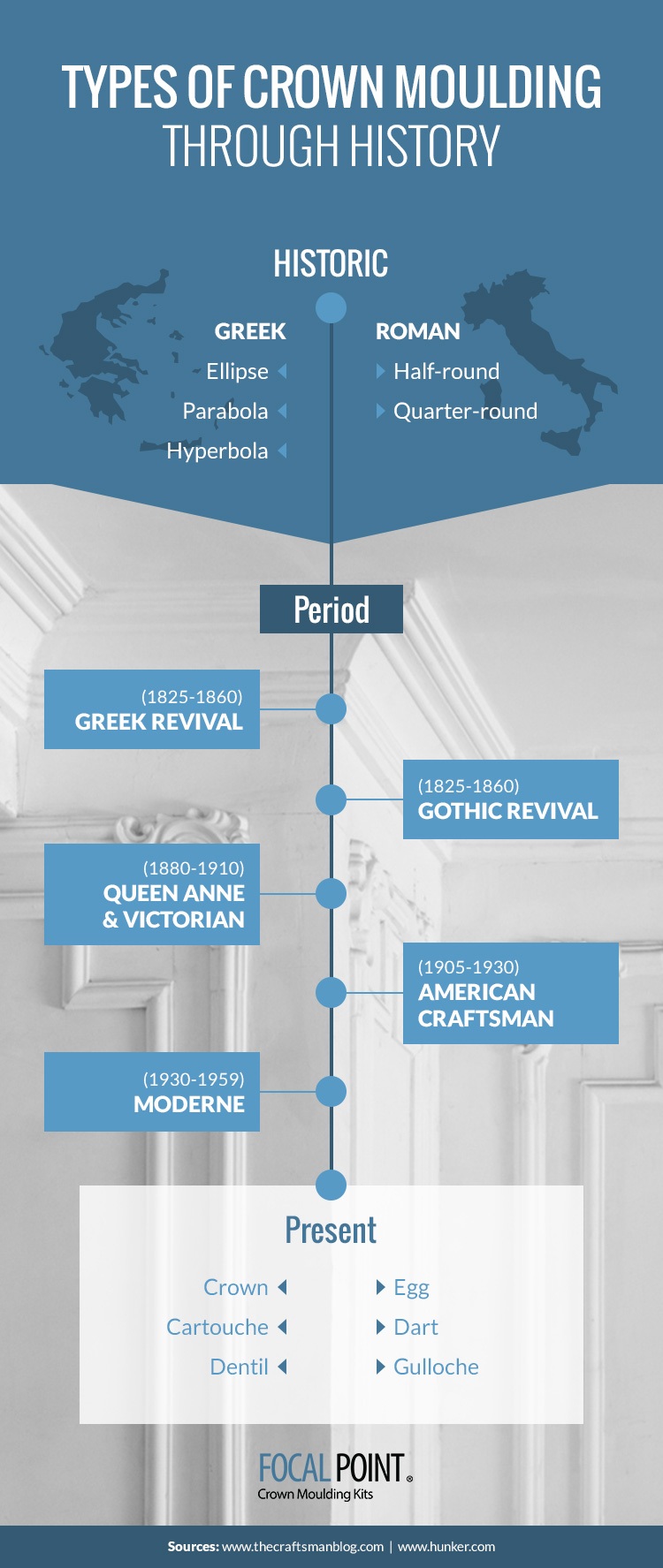
Decorative Molding in Early America
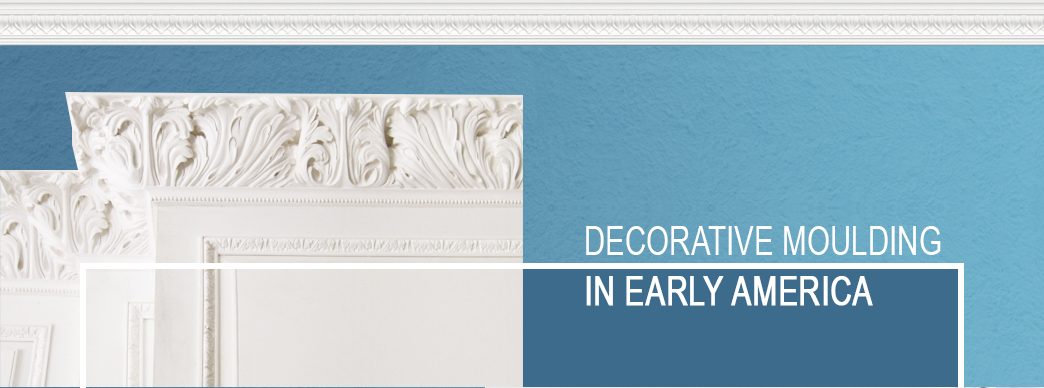
The moulded details that the ancients introduced persisted throughout the years, and meticulous, handcrafted moldings were widespread throughout European architecture. At first, Colonial American architecture drew on the popular European styles of the day. However, as the colonies broke away from England, the new republic looked back to the oldest examples of democracy for inspiration, which is evident in various aspects of early American culture, including architecture.
As part of the Age of Enlightenment, American architects embraced the classical features of Greco-Roman architecture to create Neoclassical masterpieces. Columns, pilasters and molding embellished the great homes and state buildings built during this era. Early American crown molding often featured the ogee and cyma curves that have a distinctly Greco-Roman feel.
While molding was a popular architectural detail in America's early years, it also remained a niche product reserved for only the elite because each piece of molding had to be crafted by hand. Many styles of crown molding required nailing together different pieces to form the whole design. Because of the expense involved with such a difficult-to-produce product, molding remained a symbol of wealth. The more elaborate or ornate the molding design was, the more affluent the family who owned the house.
Decorative Molding in the Victorian Era
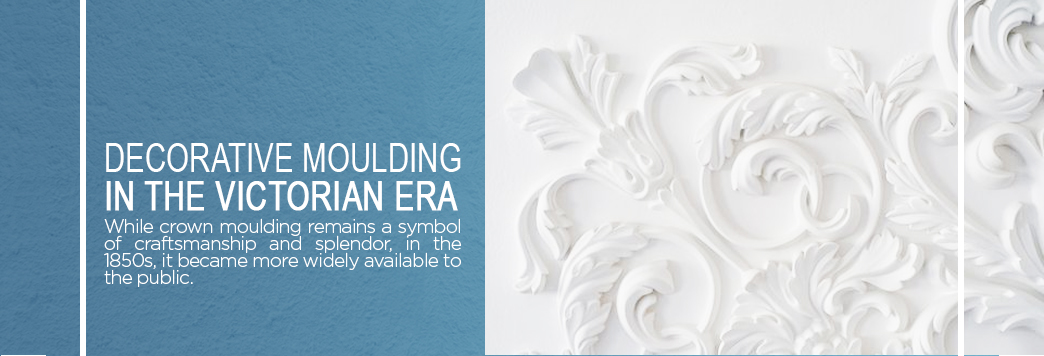
While crown molding remains a symbol of craftsmanship and splendor, in the 1850s, it became more widely available to the public. This era saw the creation of large planing machines during the second phase of the Industrial Revolution. These machines took pressure off of carpenters and artisans, as moldings could then be mass-produced to a broader market. The more automated process still kept the charm and beauty of handcrafted projects, and it even allowed for more intricate, sophisticated styles to emerge.
During the Victorian era, families who could afford it constructed homes that featured a multitude of beautiful architectural details. These homes were far more complex than the American homes built after then. Because of the Industrial Revolution, timber could be transported more easily across the nation, making it less challenging to build homes in diverse areas. The machine-made moldings from this era were detailed and no longer stuck closely to the Greek and Roman styles. Like older forms, these moldings were still built up from multiple parts.
Another significant development during this era as a result of the Industrial Revolution was that the middle class was growing. Some families that were considered "new money" were especially concerned with displaying their wealth through the architectural details in parts of their house where guests visited, such as the entryway or parlor. In addition to crown molding, picture rails, wainscoting, friezes and other details finished the walls.
Decorative Molding in Craftsman and Modern Homes
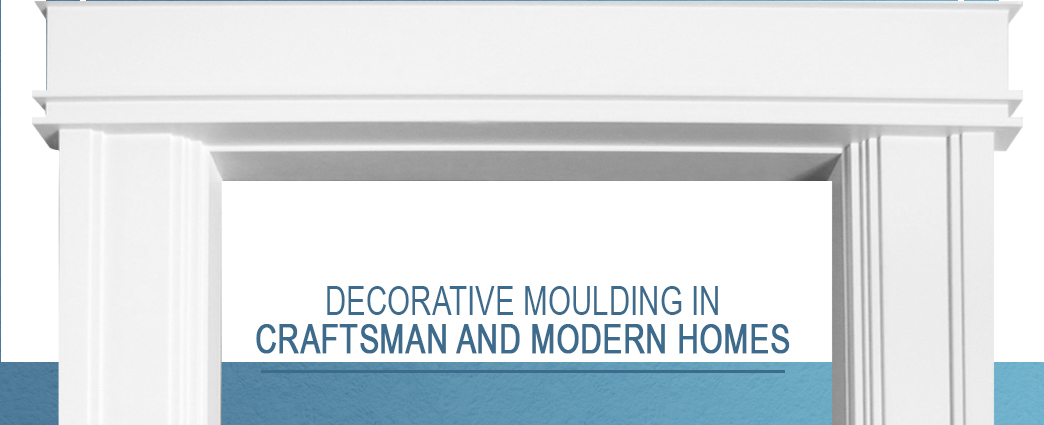
The next major movement of American architecture was the Craftsman style. This style was a response to the grandeur and complexity of the Victorian style. The architects during this era, which began in about 1905, still produced beautiful homes with plenty of decorative molding. However, they focused on simplicity in the forms they incorporated into their designs, opting for clean, straight lines and edges over more complex and lavish designs. This doesn't mean artisans didn't include other details in their designs. Edging details like an ogee were still used in crown molding.
Compared to the Victorian style, the Craftsman style was still precise but notably stripped down. However, compared to the architecture that would come after, Craftsman homes appear extravagant. The next major movement in architecture in the U.S. was the Moderne movement, which includes most famously Mid-Century Modern buildings. This movement attempted to create something completely new and futuristic, rejecting the idea that architecture should feature a wealth of architectural details.
Instead, these architects emphasized clean lines and sharp corners. Crown molding and other types of decorative molding were considered unnecessary cover-ups. Wood was also less common in these homes. The movement also emphasized keeping materials true to their natural form. Whether it was metal, concrete or another material, the idea was that it should be left unfinished. This was in keeping with the overall goal of keeping things stripped down and minimalistic.
Decorative Molding in Homes Today
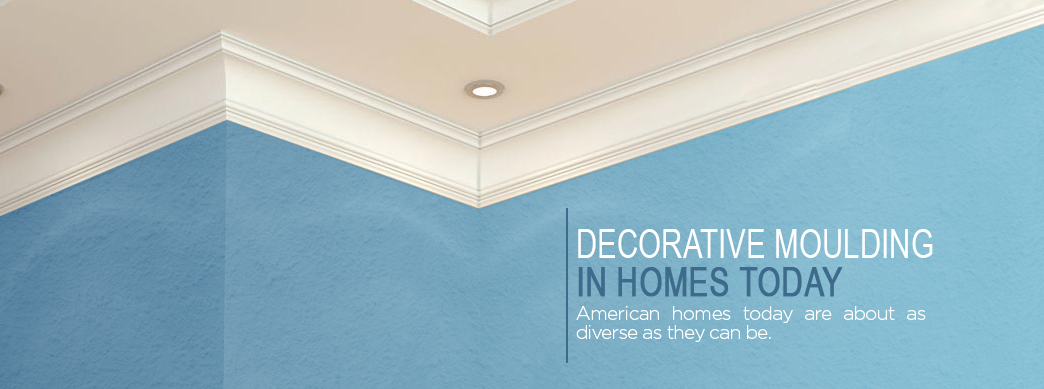
American homes today are about as diverse as they can be. Some homes from the eras we discussed above are still standing and are beautiful reflections of their time. Some builders today continue to draw on these styles in their new designs. After the Mid-Century Modern movement came to a close, Americans generally returned to an appreciation of architecture that was more artful rather than purely functional and minimalistic in its design.
Though homebuilders today rarely include the level of detailing common in Victorian homes or other grand homes of earlier eras, some architectural details remain popular. Wainscoting, for example, is still common in some homes and brings an air of refinement to a room. When it comes to decorative molding today, however, crown molding stands out as the favorite among homeowners and architects.
Crown molding is common enough today that it won't look out of place even in a smaller, simpler home if you opt for a narrow strip with a simple design. No matter where it appears, crown molding adds a lovely finishing touch to a room. Depending on the style of your home, you may be able to incorporate bolder styles of molding. A general rule of thumb is that, the higher your ceilings, the larger and more elaborate crown molding you can install.
Because homes today represent so many different styles, we recommend you pay attention to what style your home embodies and then seek to match that style in the type of crown molding you choose. For older homes that already have crown molding, if part of the molding ever becomes damaged, you'll likely have to hire an artisan to do custom work to match the existing molding. If your home doesn't have crown molding, or you want to replace the existing molding, there are a variety of styles you can choose from, each with its own unique charm. If you have custom work done, it can cost more than twice as much as stock designs.
Focal Point Products creates DIY crown molding kits that make these embellishments accessible to everyone. We've forged unique partnerships with distinguished groups like Williamsburg, Natchez and Victorian Society, who approve of our products and their attention to detail. With four different styles, including the Williamsburg-approved Governor's Palace, we reflect the best parts of historical crown molding. You can even celebrate the origins of crown molding with our Acropolis style, which demonstrates the art direction from Greeks and Romans.
Types of Molding Materials
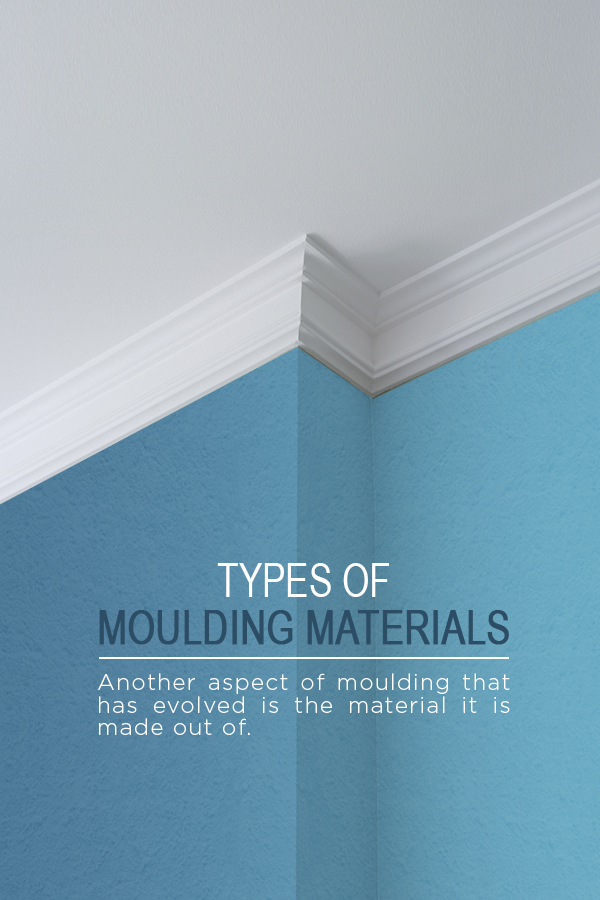
So far, we've focused on the design styles of molding over the years, but another aspect of molding that has evolved is the material it is made out of. The earliest moldings were carved out of stone, such as limestone or marble. As you can imagine, these moldings would be extremely expensive to produce today, both in terms of the material and the labor required to create a uniform carving from scratch.
Fortunately, over the years, craftspeople discovered more affordable and easier materials to work with. Solid wood and plaster were the lone options for many years, but options have now expanded to include plastics, foam, medium-density fiberboard and other choices.
Wood and plaster are the traditional materials that molding has been built from for most of history. These materials are still commonly used today. Some homeowners who want to install crown molding in their homes purchase strips of unfinished wood molding which they then paint or stain and cut before installing it with finishing nails. Medium-density fiberboard is a more affordable option than traditional hardwood. Plaster molding typically comes in 6-foot lengths that have been hand-cast. Plaster molding is not as DIY-friendly as wood.
Wood and plaster still take a great deal of skill to install, and it's still expensive for most middle-class families. However, the new options have caught up with the traditional ones, and you can now find convincing alternatives that do not lack in appearance or build. A better DIY plaster option is plaster-covered foam, which is light and flexible and fairly easy to work with. Polyurethane is another popular option today. Polyurethane foam looks a lot like plaster, but it's easier to install. Flexible polyurethane looks more like wood, which makes it a great option if you want a wood look with a more modern material.
Our crown molding here at Focal Point is made from polyurethane and is the most DIY-friendly option you'll find. Whereas other products out there put more pressure on you to cut and join pieces together with perfect precision, our crown molding kits give you an easy, perfect finish every time. The molding corners, in particular, take the stress out of trying to contour corners to join them together. The corner detail takes the guesswork out of it and leaves you with an impeccable transition that adds even more beautiful detail to a room.
Molding or Molding?
Since we're talking decorative molding, let's take a moment to address the question of spelling. You may have noticed that molding is sometimes spelled with a "u" and sometimes without. The reason you see both spellings is that one is the official British spelling and the other is American. As with other words like "honour" or "colour," the spelling that includes a "u" is the British spelling. The American spelling is simplified and doesn't include the "u."
It wasn't until the nineteenth century that English speakers attempted to standardize spellings, and the British and American linguists were not on the same page. American lexicographer Noah Webster made a point to break away from some British spellings, opting for more minimalistic spellings.
While "molding" without the "u" is the official American spelling, you'll notice that many American companies stick to the British spelling. This is likely due to the historical nature of decorative molding. A similar example is in how some American theater companies, particularly those that perform Shakespeare plays, stick to the British spelling of "theatre."
Whether you opt for the British or American spelling, there's one thing everyone can agree on — decorative molding is a beautiful architectural feature befitting the loveliest homes both in Europe and here in the U.S.
Celebrate History With Focal Point Crown Moldings
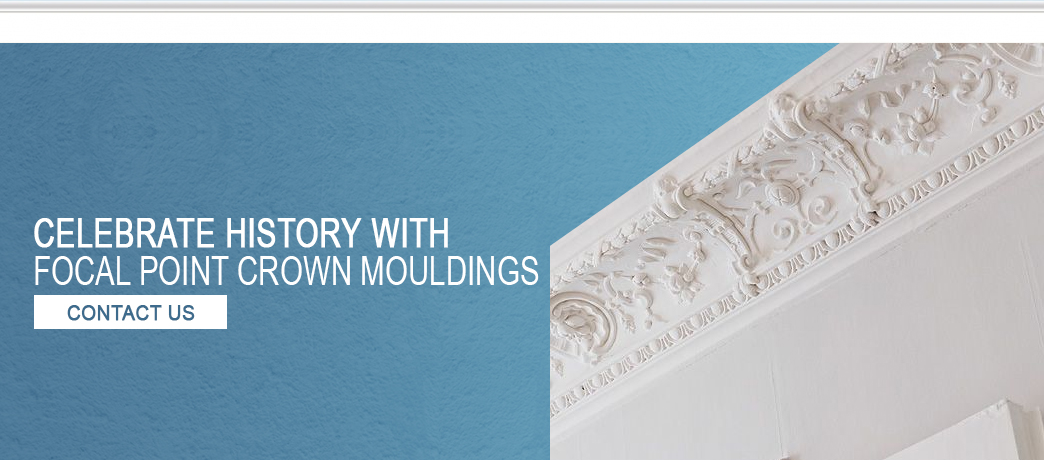
Is crown molding outdated? Absolutely not, but it certainly has a rich history. From its beginnings in classical antiquity to its incorporation into some of the most beautiful works of current architecture, decorative molding has always been the perfect means of turning bland surfaces and corners into works of art.
At Focal Point, we're passionate about the history of molding and the future of this beloved architectural detail. We believe every homeowner should be able to enjoy the beauty of crown molding. That's why our products deliver the character and sophistication you're looking for, and you can install them in a single afternoon.
How do we make the installation process so easy? Using our Quick Clips, you will place the mounts around the room with a single screw and then gently tap the molding panels — which you can cut to size and paint — into place. You don't need to be an experienced carpenter to honor or emulate history — all you need is a passion for DIY projects and our crown molding kits.
Contact us today if you have any questions. We'll help you bring the beauty of historic designs to your home. If you're interested in learning more about our crown molding, select a style below.
